- Home
- AEA Awards
AEA Annual Awards
Each year during the annual AEA International Convention & Trade Show, two prestigious awards are presented.
AEA Annual Awards
Each year at the AEA International Convention & Trade Show, the association honors two outstanding contributors: the AEA Member of the Year, recognizing an individual from an approved maintenance organization, and the AEA Associate Member of the Year, recognizing a manufacturer, distributor, or service provider.
These awards celebrate exemplary service to the general aviation community and active engagement within the association. All AEA members are encouraged to recognize their peers by casting a ballot.
To vote, cast your ballot between Dec. 2-19.
Member of the Year Nominees
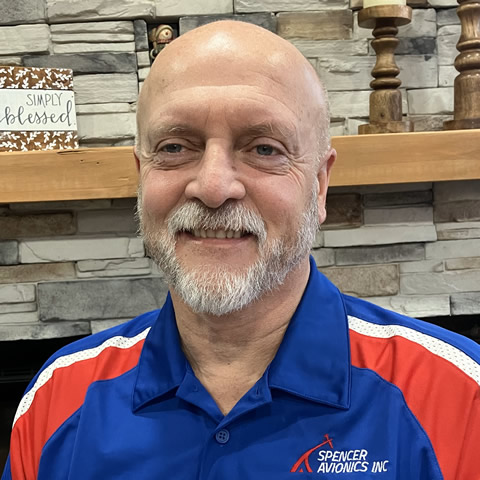
Quint DeGroot
Spencer AvionicsQuint DeGroot
Spencer Avionics – Spencer, Iowa
Quint DeGroot has been fascinated with flying most of his life. He had an uncle who would take him and his brothers flying every Thanksgiving “if” his mom would let him go. He had ear infections in early childhood, so his mom would frequently not let him fly. DeGroot told her, “Someday, I will fly airplanes.” His mom agreed and said, “Someday, I am sure you will.”
DeGroot started taking flying lessons during his high school years but was busy with sports and dating. As a sophomore, he already was dating his future wife, Jane. He didn’t get his pilot license until 1987 when he was 24 years old. DeGroot now has over 5,000 hours of PIC flying, multiengine instrument and tail dragger endorsements, and is checked out in 25 different aircraft. He has owned two planes: a Cherokee 235 and a 1963 PA30 Twin Comanche.
DeGroot joined the Army right out of high school and became a CH-47 Chinook helicopter mechanic. In the second year of a three-year stint, he was sent to Korea for 14 months. After serving his time in the Army, DeGroot attended Spartan School of Aeronautics. Immediately after graduation in 1987, he began working for Eagle Aviation in Faribault, Minnesota. Three years later, in 1990, William (Bill) Hemme offered him a job at Spencer Avionics. DeGroot purchased Spencer Avionics from Hemme in 1999, and in 2008, he built a 14,000 square-foot hanger.
Owning Spencer Avionics has never been boring, and 1 ½ years after purchasing Spencer Avionics, 9/11 happened. On Oct. 11, 2001, DeGroot was asked to testify before Congress on behalf of the AEA’s small businesses. As a result, aviation businesses received SBA low-interest loans and airspace opened, which was a huge relief after limited aircraft activity for an extended period. DeGroot also actively worked with other Iowa-based aviation businesses, flying to Des Moines on several occasions, speaking to congressmen and senators, and ultimately having legislation passed that made Iowa sales tax exempt for aviation parts and labor.
DeGroot was blessed to be able to work under Hemme for 10-plus years. Hemme worked part time for Spencer Avionics for several years after selling Spencer Avionics to DeGroot. Hemme was an engineer and taught DeGroot many things he needed to know but could never be taught in a classroom setting, even at a great school like Spartan. Spencer Avionics is unique in that it works on a large variety of small to corporate aircraft. It does not specialize in any one make, model or year. It will do the smallest repair for casual farmer pilots who just want to fly around on a nice day to a large install in a corporate plane. Sometimes, DeGroot goes flying with the customers to teach them how to use the equipment already installed. Located in northwest Iowa, Spencer Avionics gets customers from all the surrounding states and as far away as Texas, Florida and Washington. DeGroot is well known for his troubleshooting abilities in a large variety of problems, and his knowledge of autopilots is coveted by all young avionics technicians.
DeGroot is active in his church and local Christian school where he is president of the school board. He has been married to Jane for over 40 years; they have four children and 13 grandchildren. One son and a son-in-law are professional pilots. His three sons and son-in-law have served in the Air Guard. Needless to say, the love for God, country and aviation runs strong in the De Groot household.
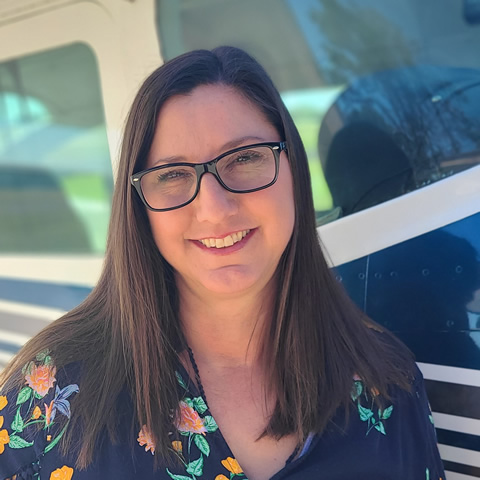
Monica Gualandri
Sarasota AvionicsMonica Gualandri
Sarasota Avionics – Venice, Florida
Monica Gualandri is part of a family that has supported the Venice flying community and Venice Airport for over 30 years. Her aviation journey began in 1994 when she and her husband, Dan, founded Gualandri Aircraft Services after Dan earned his A&P license. While raising their two daughters, Toni and Alexis, Monica managed all administrative operations and helped build the company’s reputation for technical excellence and customer service.
Gualandri Aircraft Services’ collaboration with Sarasota Avionics led to a lasting partnership, and in 2009, both Monica and Dan officially joined the Sarasota Avionics team. Since then, Monica has expanded her expertise by actively participating in AEA national and regional events, where she values the training and networking opportunities that strengthen her team and the industry.
Today, she oversees all five of Sarasota Avionics’ Part 145 repair stations and serves on the AEA’s government and industry affairs committee. Known for her deep understanding of STC documentation and FAA regulations, she has become an indispensable resource within the organization. Whether on the shop floor or in the front office, one phrase has become familiar across Sarasota Avionics: “Go ask Monica.”
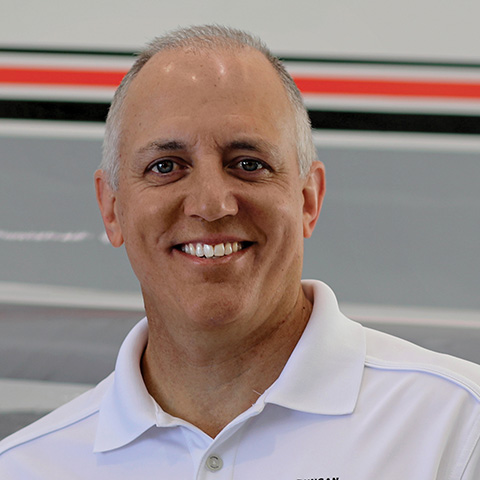
Mike Minchow
Duncan AviationMike Minchow
Duncan Aviation – Lincoln, Nebraska
As president of Duncan Aviation, Mike Minchow is responsible for the day-to-day guidance and development of the Duncan Aviation enterprise. He provides direction and leadership for all Duncan Aviation locations and personnel and leads the senior management team.
Minchow is a longtime team member with Duncan Aviation, joining the Duncan Aviation Design Center in 1993 as a designer while working on his master’s degree in architecture at the University of Nebraska-Lincoln. He transitioned to team leader of design, moved to sales team leader, and then to program manager. He was promoted to sales manager over modifications (paint, interior, avionics, and installation) and assumed those responsibilities for airframe and engine in 2011. In October 2015, he was promoted to Duncan Aviation’s senior management team as vice president of sales and then vice president of modifications and engineering. Minchow was named chief operating officer-Lincoln in July 2020 and now serves as Duncan Aviation president.
Minchow has been actively involved in the local community and has served on various aviation industry boards, including the Gogo dealer advisory board, Honeywell channel partner advisory board, AEA board, NBAA certified aviation manager governing board, and the Lincoln Chamber of Commerce board.
Minchow and his wife, Renae, have three boys: Andrew, Mason, and Aden. He enjoys hunting, golfing, and attending family activities.
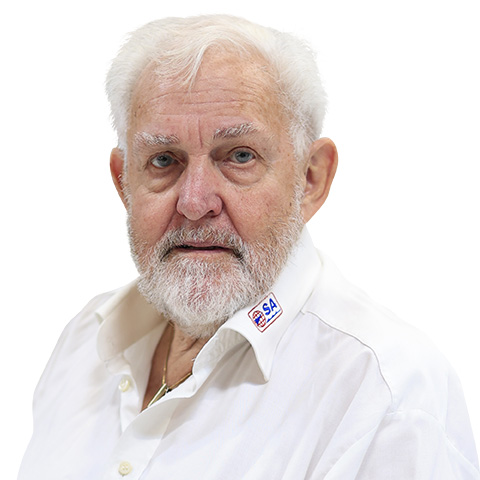
Hardy B. Truelsen
Scandinavian AvionicsHardy B. Truelsen
Scandinavian Avionics – Billund, Denmark
From being a farmer’s son in the countryside of Denmark, Hardy B. Truelsen took a leap of faith when joining the Danish Air Force. Over a period of seven years, he became a military sergeant, specializing in avionics systems on the Starfighter F-104 aircraft./p>
Truelsen developed skills, expertise and passion for avionics. In 1974, he went civilian by joining a GA business involved in aircraft maintenance, aircraft sales, and training, with main activities across the Nordic countries. His main responsibility was to build an avionics department to supplement the other activities of the company.
In 1978, the avionics department had grown to six employees and a healthy capability on component MRO and aircraft modifications, but due to ownership issues, the company had to cease operations. Truelsen seized the opportunity and purchased the avionics activities out of bankruptcy. With great vision, investment and optimism about the future, he founded Scandinavian Avionics, building on the same foundation of customers, suppliers and staff of his former workplace. This became the foundation of The SA Group.
Through continuous development and strong customer and supplier relations, Truelsen kept moving forward with a loyal and growing team, putting in all his efforts.
Today, more than 47 years later, the group has grown into a value-based avionics and training provider for the international aviation community with a broad value-chain, including R&D and qualification, engineering and certification, manufacturing, installation, training and component MRO services. Recently, The SA Group entered into the interiors segment, offering VIP interior solutions in combination with avionics and training. Today, The SA Group is still headquartered in Billund, Denmark, and has 11 facilities across Scandinavia, Europe, India and East Asia, providing technical services close to their customers.
Over nearly five decades of The SA Group’s existence, Truelsen has worn many hats, worked with countless talented colleagues, and seen his life-project grow into a recognized achievement. Today, Truelsen primarily works on the strategic level, proudly following the fortunate fact that both his children, Carina and Michael, have joined the company – Carina in marketing and Michael as CEO.
Throughout his many years in aviation, the AEA has naturally been a strong connection for both Truelsen and The SA Group. The AEA has been an integral part of the company’s journey since the beginning, with Truelsen serving on the AEA board of directors, fighting for the industry he loves. This has provided a valuable platform for building relationships and understanding the aviation industry, and no doubt, the AEA has played a significant role in the growth, opportunities and strong position of The SA Group — past, present and future.
Looking back, Truelsen can reflect on an exciting, challenging, and fulfilling journey. The SA Group has, of course, required hard work and dedication, but for Truelsen, it has been a matter of passion and dedication for the company and for industry.
“It’s been quite a journey – one I will forever cherish and appreciate,” he said. “Ups and downs, but in the end, I have so many good memories and relationships that I am truly grateful for, and the majority originates from the AEA.”
Truelsen still lives in Billund, Denmark, together with his wife, Bodil, enjoying that both their children and grandchildren have settled in the city. Scandinavian Avionics remains his heart project and hobby, which is why Truelsen is still actively involved and dedicates as much time as possible – alongside golfing, social activities, and family life as he embraces a new chapter.
Stepping back is hard, but fortunately Truelsen will always have his place in SA and the aviation industry to which he has dedicated almost six decades — a great and valuable achievement.
Associate Member of the Year Nominees
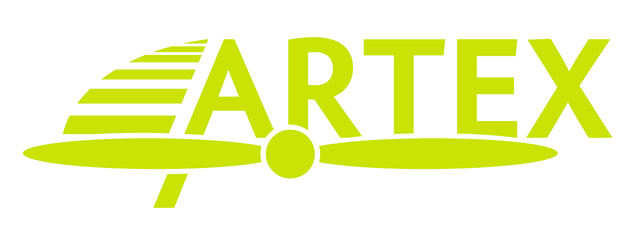
ACR Artex
ACR Artex
ARTEX was founded in 1971 and was a corporation until it was merged with ACR Electronics in 2012. ARTEX then became a brand under ACR Electronics. ARTEX has played a defining role in advancing safety across the general aviation community.
What began as a small avionics distributor grew into a trusted manufacturer after earning FAA authorization in 1980 to produce ELT battery packs.
By the 1990s, ARTEX had revolutionized GA safety with compact, affordable 406 MHz ELTs. Milestones such as the C406-N with integrated GPS and the ME406, the lightest 406 MHz ELT of its time, set new standards for accuracy and accessibility.
With the rapid growth of ARTEX ELT came requirements for a worldwide service network. ARTEX joined the AEA to foster business relationships and help develop its Part 145 repair network.
Following its 2015 integration with ACR Electronics, ARTEX continued its GA focus, introducing the ELT 345 and ELT 1000, designed and built in Fort Lauderdale for small aircraft owners worldwide.
Today, in partnership with the AEA, ARTEX remains committed to empowering general aviation with smarter, lighter, and more reliable beacons – keeping pilots safe wherever their journeys take them.
ACR Electronics has been a member of the AEA since October 2011.

Buller Enterprises
Buller Enterprises
Buller Enterprises is known in the aviation industry for manufacturing the Panel Pro. The first Panel Pro was sold in 1993, but the idea, development and testing started several years earlier. Larry Buller, founder of the company, graduated from Letourneau College with an aviation technology degree, served in the U.S. Army, including one year in Vietnam as crew chief on a Huey. Following his military service, he worked at Aero Comm Systems in St. Petersburg, Florida, as an avionics repair and installation technician. There he gained experience and furthered his education. In 1976, he and his wife, Linda, returned to North Dakota, home state for both, and together they started an avionics shop that was associated with a Cessna dealer. Cessna was only offering ARC avionics at that time, and many of the new aircraft owners wanted other brands. The Cessna dealer would buy the aircraft without avionics, and their avionics shop would install the avionics to customer specs. There was a significant amount of panel work for each aircraft, and with every panel being done manually using hole punches, drills, and files, Buller felt “there just has to be a better way.”
The 1980s saw IBM introduce the IBM PC, which made it practical to control external devices like a Panel Pro, Auto Desk released AutoCAD software introducing the dxf file, and now the technology was available for the idea of a Panel Pro to become reality. Buller Enterprises developed the Panel Pro 2216, capable of cutting 22-by-16 inches, making it possible to cut a pilot or co-pilot panel. It wasn’t long before the market was ready for a larger Panel Pro, and in 1997, the next model was available, capable of cutting a King Air panel.
By 2005, the Panel Pro 4824a with new software and updated features was ready for more exposure, and Buller Enterprises joined the AEA as an associate member. The AEA was an important resource when starting the avionics shop. The training received through the AEA was excellent, not only with the equipment but with business management. Many of those early lessons are still valuable today. Becoming an AEA member was a wise decision and gave the company exposure to the shops that could use the Panel Pro. Through the AEA Convention’s New Product Introductions session and exhibit hall displays, they have been able to sell not only in United States but worldwide, and the Panel Pro has become the industry standard.
Tim Buller, Larry and Linda’s son, returned to North Dakota in 2010 after serving in the Navy for 13 years. His computer programming, mechanical, electrical, and supervisory skills combine to make him an integral part of Buller Enterprises.
Buller Enterprises is a family-owned business whose goal is to provide a great product by listening to its customers and providing world-class support. The Panel Pro has seen changes in size, features and accessories from the first Panel Pro 2216 to the current Panel Pro 6126, and Buller Enterprises looks forward to meeting the ongoing needs of the aviation industry by introducing new products, enhancements and continuing its great customer support.
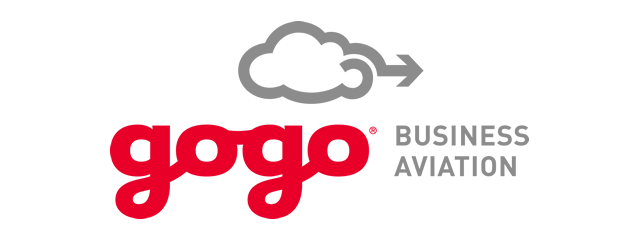
Gogo
Gogo
The Gogo Galileo, high-speed, low-latency, LEO, HDX and FDX antenna systems are changing the connectivity landscape as Gogo becomes the only multi-orbit, multi-band business aviation connectivity provider dedicated to supporting the diverse needs of the global business aviation sector.
This latest innovation builds on the company’s history, which began in 1991 at a barbecue restaurant when founder Jimmy Ray conceived the idea and sketched a proposal to enable affordable telephone communications for private aircraft.
Gogo began transforming the in-flight experience under the brand Aircell, introducing the world’s first analog cellular network for private aviation in 1997. The U.S. Federal Communications Commission awarded Gogo an exclusive Air-To-Ground 3 GHz broadband frequency license in 2006, and just two years later, Gogo made its debut on commercial aircraft.
In 2010, a new Aircell ATG 5000 broadband solution quickly became the North American go-to for connectivity. Reflecting the changing nature of its business, Aircell rebranded to Gogo Business Aviation in 2011 and, just two years later, became a NASDAQ-listed business in 2013; the same year, Gogo introduced Gogo Text & Talk, enabling smartphone use in-flight.
Continuing its innovative story, Gogo unveiled Gogo AVANCE in 2017 to deliver business aviation’s first software-driven connectivity platform, and in 2019, bolstered its offering by kicking off the industry’s 5G revolution.
As the appetite for in-flight data on business aircraft continued growing exponentially, Gogo Business Aviation seized the opportunity to return to its roots in 2020 and sold its commercial division to Intelsat (now SES) in 2020, allowing it to focus purely on optimizing the business aviation sector’s need for data.
In 2024, Gogo Business Aviation decided to turbo-charge its future by acquiring the Satcom Direct connectivity solutions business. With the acquisition complete, Gogo revealed a complete rebrand in early 2025. The contemporary image represents Gogo’s position as a single resource for business and military aviation customers seeking multi-orbit, multi-band connectivity delivered through advanced, secure, and reliable in-flight connectivity solutions.
In March 2025, the first Gogo Galileo HDX antennas took to the sky, bringing low-Earth-orbit connectivity to more sizes of business aircraft than ever before. Gogo now offers GEO, LEO, and ATG services, supported by a global network of offices, dealers, and representatives, enabling connectivity beyond all expectations.
More than 20,000 aircraft worldwide optimize Gogo connectivity today.
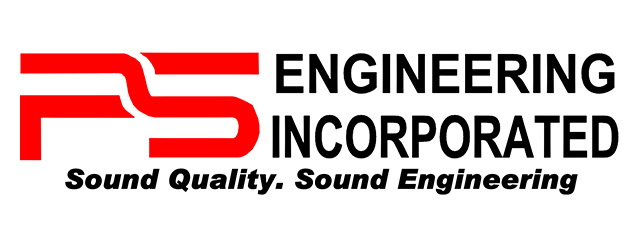
PS Engineering
PS Engineering
The inspiration for PS Engineering began in 1984 when Mark Scheuer saved $5,000 from his job at Hewlett-Packard and purchased a 1971 Grumman AA-1A. At the time, intercoms were relatively rare, and unsurprisingly, the AA-1A had none. After a few noisy flights with his wife, Joanie, it became clear that an intercom was essential. However, none of the available options met his expectations.
In 1985, PS Engineering was incorporated to pursue the advancement of aircraft communications, and the Aerocom was born. Scheuer’s experience at Hewlett-Packard taught him what makes a great company. He adopted the “HP Way” as the foundation for PS Engineering’s operations. With a focus on innovation and high quality, the company dedicated itself to designing and manufacturing audio control systems that addressed cockpit communication challenges.
In 1990, PS Engineering became the first company to receive FAA TSO certification for a panel-mounted intercom. The PM1000 featured individually gated microphones, significantly reducing background noise. This FAA approval marked a major milestone and led to the establishment of an FAA certified repair station within the company. All subsequent products were designed to meet RTCA standards.
As the product line expanded, it became evident that joining an organization that connected avionics shops and manufacturers was vital for growth. In 1991, PS Engineering joined the AEA, gaining access to valuable services, training, the monthly Avionics News magazine, and the annual conventions that unite the avionics industry.
The next major innovation came in 1995, when PS Engineering received FAA TSO certification for the groundbreaking PMA6000M – an audio panel that integrated an intercom, music, and marker beacon receiver. It was the first general aviation audio panel to offer “Split” mode, allowing the pilot and co-pilot to operate on separate communication channels.
In 1997, PS Engineering was honored with the AEA’s Associate Member of the Year award. As a relatively new player in the avionics industry, this recognition provided valuable visibility and helped fuel the company’s growth.
That same year, the company introduced the PMA7000M-S, which brought several industry firsts. IntelliVox, PS Engineering’s patented automatic VOX circuit, eliminated the need to adjust VOX trip levels. Another innovation was the ability to replay the last radio transmission from air traffic control, reducing the frequency of “Say Again” requests from pilots.
In 2014, PS Engineering was once again honored with the AEA’s Associate Member of the Year award. The company takes pride in supporting its dealers and OEMs with both pre- and post-sales service. As they say, you don’t truly know how great a company is until there’s a problem; how that problem is resolved is what separates good companies from great ones.
Today, PS Engineering is deeply involved in special mission and business aviation aircraft. Through a licensing agreement with the USAF-Wright Patterson Laboratory, the company fields patented MultiTalker technology to deliver superior cockpit and radio communications – another major innovation in aircraft audio systems.
By contributing innovative ideas to the aviation community, PS Engineering proves that a small company with a talented and dedicated team can compete and drive the industry forward. With a current staff of 21 and an average employment length of nearly 14 years, the company continues to thrive.
Now celebrating its 40th year of designing and manufacturing aircraft audio systems, the future looks brighter than ever. The HP Way remains alive and well at PS Engineering.

VIAVI Solutions
VIAVI Solutions
VIAVI Solutions’ heritage in avionics testing, tracing back through IFR and Aeroflex, has made it a trusted name for over 40 years. The company’s solutions ensure that airborne systems, including communications, navigation, and surveillance, are installed, tested, and maintained to the most rigorous standards set by regulatory bodies like the FAA and EASA.
VIAVI Solutions test products cover an extensive range of avionics systems. This includes transponders, traffic collision avoidance systems, distance measuring equipment (DME/TACAN), instrument landing systems, emergency locator transmitters, AM/FM/HF comms, GPS simulators, radio altimeters, and fuel quantity test systems.
Its flagship product, the AVX-10K Flight Line Test Set, demonstrates a commitment to innovation. This single, easy-to-use device consolidates the testing of multiple critical airborne systems. Its integration with the VIAVI Mobile Tech App streamlines workflows, enables testing in and around the aircraft, and provides technicians with convenient access to technical documentation and asset management. This not only enhances efficiency but also significantly reduces the potential for human error. VIAVI’s flight line test solutions are used by airframe OEMs around the world across both commercial and military aircraft platforms, a powerful testament to the reliability and performance of VIAVI technology.
VIAVI is not just a follower of aviation trends but a driver of new technological standards. Its development work directly addresses the most pressing challenges in aviation. Through the acquisition of companies like Inertial Labs, VIAVI is directly tackling the issue of GPS jamming and spoofing, which affects both commercial and military operations. In June 2025, VIAVI and Inertial Labs launched a Visual-Aided Inertial Navigation System allowing aircraft, including UAVs, resilience to maintain accurate flight paths in the absence of reliable GPS signals.
VIAVI is actively involved in the development of next-generation technologies like ADS-B compliance testing, which is essential for global air traffic modernization. Our solutions extend to supporting unmanned aerial systems and military avionics, demonstrating a forward-looking approach to adaptability.
VIAVI Solutions has demonstrated an unwavering commitment to innovation and excellence, creating the essential tools and technologies that underpin the safety and reliability of the entire aviation ecosystem. Its dedication to advancing avionics testing, forward-thinking approach to combating emerging threats like GPS jamming, and commitment to enabling both civilian and military aviation are positive traits. Its work provides the silent but vital assurance that enables millions of safe flights each day.
